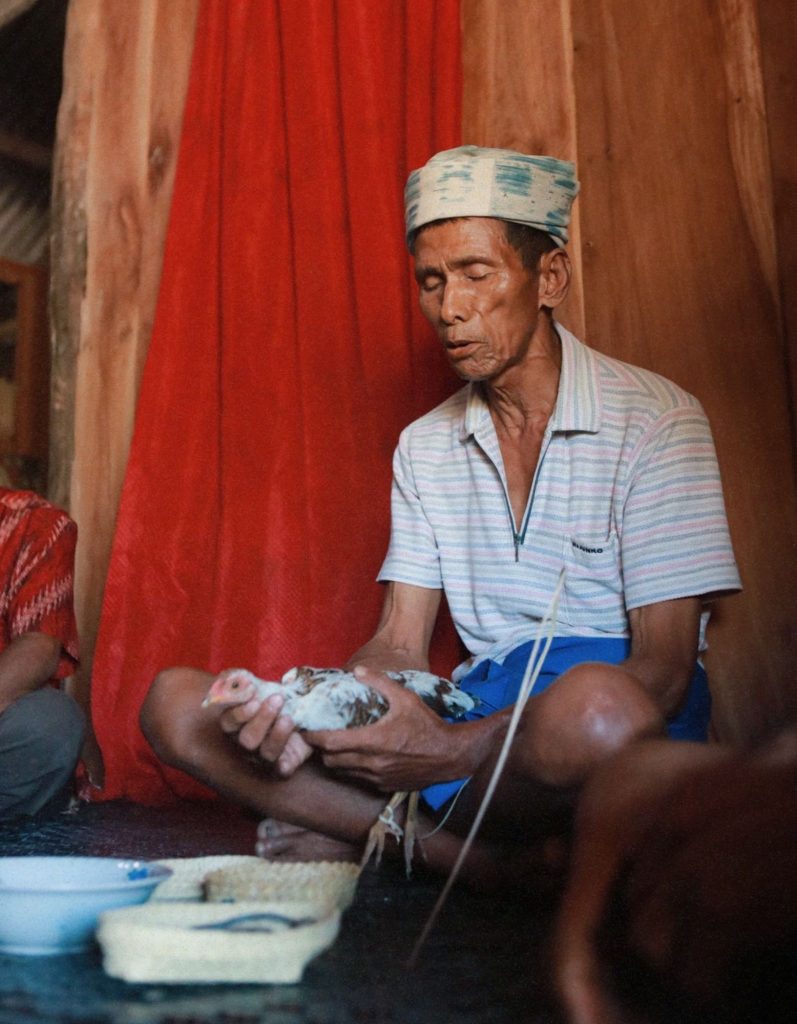Uncategorized
Marapu: The Living Legacy of Megalithic Life
Sumba has become famous for its continuous preservation of megalithic traditions, solidifying its reputation as a thriving megalithic culture. The megalithic tradition is closely related to the worship of ancestral spirits. Without animist beliefs, the megalithic tradition couldn’t survive. This close relationship between Sumbanese and their ancestors makes Sumba being referred to as ‘Tana Marapu’ or the land of Marapu. Marapu is the term used to call the ancestors in Sumba. Marapu is also used to refer to the animistic belief system that originated and evolved in Sumba. Marapu is grounded in the veneration of ancestral spirits, viewing them as a bridge between the living and Amawolu Amarawi (The Creator). In the Sumbanese language, Marapu translates to ‘the honored,’ signifying deep respect for these spiritual beliefs.
Marapu exerts its influence on the cultural expressions and practices of the Sumbanese community, particularly those associated with ancestral worship. Additionally, Marapu plays a central role in making burial ceremonies a significant aspect of Sumbanese culture. The belief in the existence of the souls leads the Sumbanese society to regard their ancestors as determinants of the fate of their descendants who are still living on the earth. As a result, the burial ceremony takes on a crucial role in the social life of the Sumbanese community, facilitating the appropriate journey of the deceased souls to the afterlife, referred to as Parai Marapu.

In Sumbanese beliefs surrounding death, humans lack the ability to free the soul from the body. Diverse rituals are essential to guide the soul on its journey to Parai Marapu. The deceased spirit will be highly dependent on their living families to hold a proper burial ceremony so that the journey to Parai Marapu is made easier. Once the soul reaches Parai Marapu and unites with the ancestral spirits, it transforms into Marapu, revered and deified by the Sumbanese. If the burial ceremony isn’t conducted based on customary regulations, the journey of the soul may be disrupted. Souls that are trapped and wander around the neighborhood are believed to bring misfortune to those who are still alive.
The burial ceremony is conducted by offering several livingstocks. Horse is the main sacrificial animal because horse serves as a vehicle for the soul to arrive at Parai Marapu. Items of a personal nature, such as jewelry and woven fabrics, are laid to rest alongside their owner in the burial ceremony. The ceremony requires a lot of money due to the large number of livestocks and items to be presented in a burial ceremony. Therefore, it is customary in Sumba to retain the deceased at home for several months or even years, waiting until the family accumulates sufficient funds to finance the burial ceremony.

The reverence for the ancestors isn’t only visible from the burial ceremony, but also the tombs that are built magnificently with various motifs that decorate the penji (gravestone). Sumbanese people believe that Marapu has the power to determine someone’s fate. This belief leads Marapu adherents to treat their ancestral spirits special, manifested in the form of periodic offerings to the ancestral spirits. These offerings typically include betel nuts and leaves that are placed in front of the graves. Meanwhile, prayers and rituals to the Marapu can only be conveyed through a rato (priest). The worship of Marapu causes the graveyard complex to be located in the middle of the village or in front of the house in order to make it easier for their families to send offerings and prayers.
Bibliography
Handini, R., Simanjuntak, T., Sofian, H.O., Prasetyo, B., Artaria, M.D., Wibowo, U.P., & Geria, I.M. (2019). Situs Lambanapu: Diaspora autronesia di Sumba Timur. Jurnal Penelitian dan Pengembangan Arkeologi, 36, 1-14.
Presetyo, B. (2016). Eksotisme megalitik Nusantara. Yogyakarta: Gadjah Mada University.
Soelarto, B. (n.d). Budaya Sumba jilid I. Jakarta: Proyek Pengembangan Media Kebudayaan Ditjen Kebudayaan Departemen P & K Republik Indonesia.


